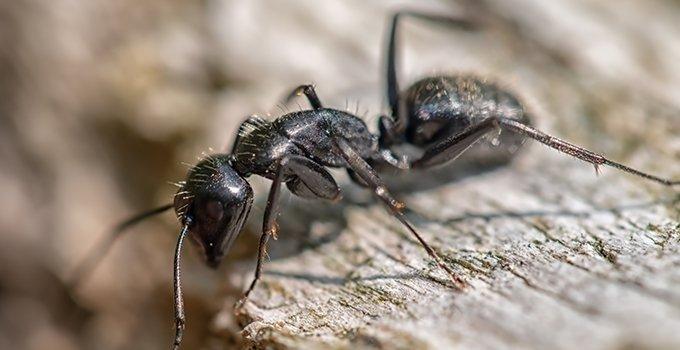How To Tell If It Is Carpenter Ants Or Termites Chewing On Your Pulaski Property
5/14/2021

Is it a bird? Is it a plane? Or is it one of the many winged varieties of insect found around springtime Pulaski properties? Truth be told, there are already a lot of pests to worry about during the warmer spring months. Pantry pests, beetles, mosquitoes, fleas, ticks, and so many other creatures are just beginning to gear up for their warm-season rampages. However, there are two pests in particular that choose early spring to launch their respective plots: the carpenter ant and the termite.
Each of these pest species sends out sexually mature ‘alates’ in the spring in order to foster a colony. These winged insects swarm in large clouds of other insects in order to find a mate. Shedding their wings and settling down, the creatures will eventually become the founding fathers (and mothers) of a successful insect colony.
Both ants and termites have wings during their alate stage, but each possesses slightly separate characteristics:
- Termites have broad waists, while carpenter ants have thin (or pinched) waists.
- The wings of the Carpenter ant are uneven in size. The wings of the termite are about the same length.
- Ant antenna is usually ‘crooked’ or elbowed. In contrast, the termite antennas remain largely straight and unbent.
Species such as drywood termites and dampwood termites tend to stay out of sight during the day, making them less likely to spot than carpenter ants. Of course, it is much more difficult to tell swarmer species apart in the first place, especially if you are less familiar with their identification. Let's take a look at some differences below.
Termite Swarmers And Carpenter Ant Swarmers: How To Tell The Difference In Your Pulaski Home
Now that we have looked at the physical differences between carpenter ant swarmers and termite alates, we will take an in-depth approach to their behaviors and preferences.
Termites consume the wood around them in order to feed their growing colonies. They require areas of high humidity, low direct sunlight, and ample rot or decay. Any entry point around the home may allow a colony to get inside. If you own lots of older wood in the home, your risks for developing a termite problem are high.
In contrast, carpenter ants do not eat the wood in which they infest. Instead, they use their large mandibles and strong legs to create tunnels for larvae, workers, and drones. These insects are often attracted indoors by the presence of damp wood.
Both of these pests choose to destroy wood differently. Termites consume the glucose in wood at alarming rates and bore small holes that run along the wood grain. In contrast, carpenter ants take much longer to carve out their nests and leave large entry point holes around the wood and wooden objects. Should you notice any of these signs, you must call All Pest Control & Solutions immediately for a home inspection.
Check The Signs And Symptoms Of Pests With All Pest Control & Solutions
Realizing that your home may be a honeymoon destination for wood-eating insects is terrifying. Noticing an increase of destruction in the home due to insect activity is even more upsetting. If you see signs of either pest becoming more active in the home, your best course of action will be to call the professionals at All Pest Control & Solutions.
We guarantee the protection of your Pulaski property with three easy steps: inspection, treatment, and follow up action. Ready to see us get going? Reach out to the team at All Pest Control & Solutions for carpenter ant or termite control at your earliest convenience.








